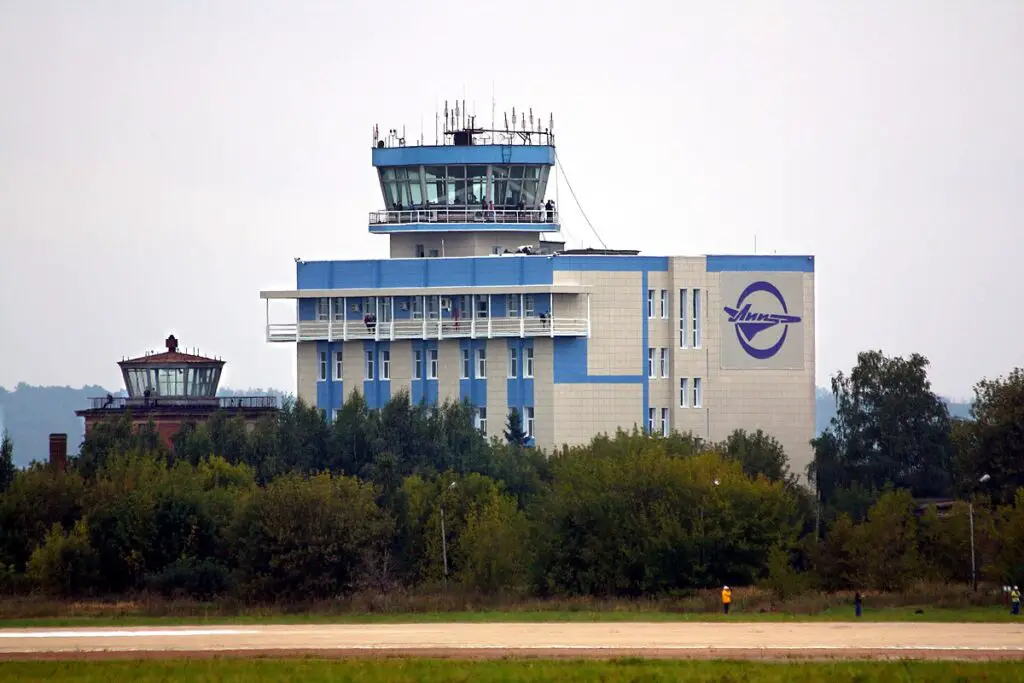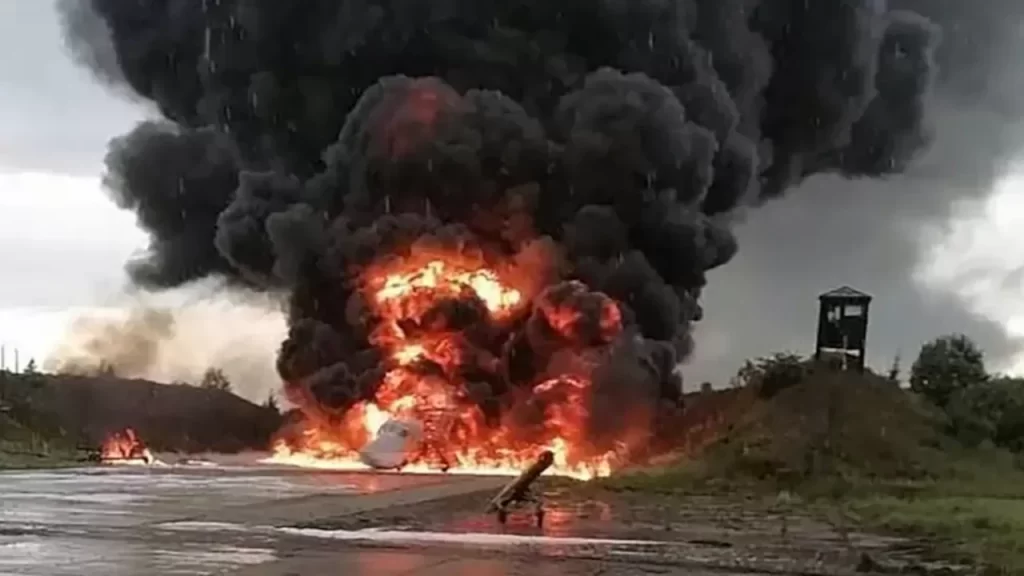The frequency of drone attacks launched by Kyiv against Russian targets deep inside Russian territory has recently grown. These strikes are often directed at strategic airfields, sites that produce petrol and lubricant, military research institutes, and defence companies. Recently, the Ukrainian President Volodymyr Zelensky said that a “long-range weaponry” was successfully used to hit a target approximately 700 kilometres away.
The Russian Federal Security Service (FSB) announced on August 31 that a Ukrainian sabotage cell planning terrorist attacks on military and energy infrastructure objects was eliminated in the Bryansk region.
On the same day, anti-drone weapons and a specialised carbine were used in the skies over Bryansk, according to Alexander Bogomaz, the governor of the Bryansk area. Bogomaz said that three Ukrainian drones of ‘aeroplane type’ were brought down in the process. According to the Russian Ministry of Defence, a second attempt at a terrorist assault using an unmanned aerial vehicle (UAV) of the aeroplane type was thwarted in the Moscow region close to Voskresensk practically simultaneously.
The UAVs were shot down just a few tens of kilometres from the Ramenskoye airfield, where the world-famous M.M. Gromov Flight Research Institute is based. This is where almost all experimental aircraft made in Russia are tested. The drone didn’t reach its goal, and no one was hurt or anything was broken. However, the “Curtain” plan was implemented just like the ones used during such attacks on Moscow airports when drones were spotted in the territory surrounding Moscow.

It is important to note that similar UAV flights towards Moscow, which resulted in the closure of the airports in the capital city, have occurred frequently over the past few weeks. Because Kyiv intends to increase drone strikes on Russian soil and broaden the geographic scope of their usage, there is a possibility that the threat to civil aviation in Central Russia will continue.
It is still unknown how it arrived at that location. However, it is highly plausible that its targets were the research and industrial facilities of the MM Gromov and its famous runway, the longest in the world. Almost every futuristic Russian military aircraft, unmanned aerial vehicle (UAV), and other aircraft are now being tested on this runway. The drone was probably sent to conduct a reconnaissance mission on the air defence system of the M.M. Gromov installations in preparation for a subsequent large attack upon them. Recent drone assaults carried out by the Ukrainian Armed Forces have included the employment of strategies of this kind.
On the evening of August 30, 2018, UAVs carried out the largest strike on strategic Russian locations in the west and the middle of the country. The systematic drone reconnaissance deep within Russian territory made this possible. According to data obtained from official sources, drone flights were monitored and destroyed throughout the territory of Crimea and in six areas of Russia: Bryansk, Oryol, Kaluga, Moscow, Ryazan, and Pskov.
Recently, Pskov Airfield was the target of the most serious and unanticipated hit by Ukrainian drones. The city is located approximately 800 kilometres from the territory of Ukraine. Pskov airfield is home to both civilian passenger planes and the military transport aviation (MTA) of the Russian Armed Forces. Pskov’s airport serves as the base of operations for the Berlin Red Banner Aviation Regiment, a military transport unit currently engaged in combat with Ukraine. In addition, the city serves as the home base for the 76th Airborne Assault Division of the Airborne Forces. The Il-76s are used to transport paratroopers. Over ten Ukrainian UAVs collided with objects in that area, destroying four Il-76 military transport planes and igniting gasoline supplies. No official information was given regarding the severity of the damage sustained by the MTA aircraft. The fact that an attack was carried out on the airfield and the planes were damaged raises the question of how this could have occurred.

It is a reality that Kyiv has been able to develop the manufacturing of attack drones. Therefore, Russia must be prepared to defend itself against these drones in the special military operating zone and throughout its territory. Recent statements by Yuri Shchyhol, the head of Ukraine’s State Special Communications Service, indicate that the country intends to build and purchase approximately 200,000 combat drones in 2023. These drones will include both surveillance and strike drones. According to the official, the Ukrainian government would have financed the manufacturing of 22,000 strike drones in 2023, with about 15,000 already being handed to the Ukrainian Armed Forces.
The attacks on strategic facilities are not a new occurrence. In December 2022, at least three persons were killed in an explosion at the Russian Dyagilevo military airfield of Ryazan, southeast of Moscow, and a second explosion occurred at the Engels-2 airport near Saratov. The telegram channels reported drone attacks, but official Russian sources blamed it on a fuel tank detonation in Dyagilevo. Russia has remained silent on the attack on Engels. In August, social media images showed a Tupolev Tu-22M on flames at the Soltsy-2 airbase, south of St. Petersburg, after an attack by a Ukrainian UAV.
